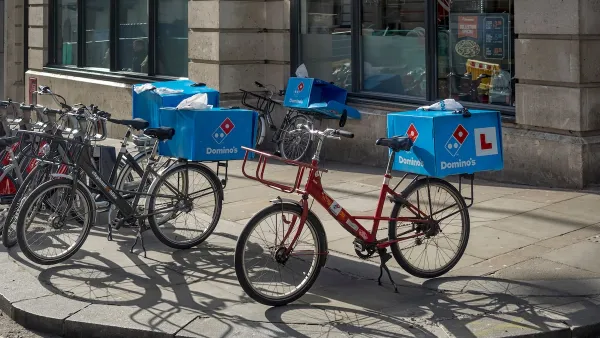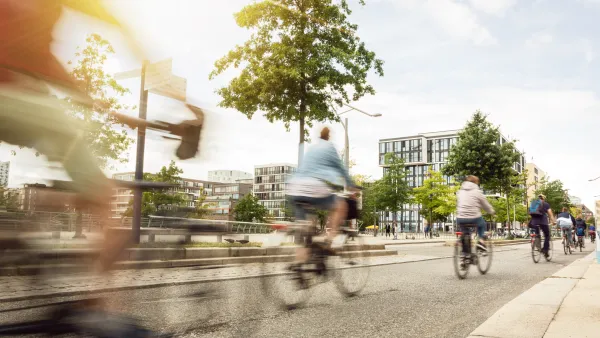London has been preparing for years for a “quiet revolution” for its bike network: the "Quietways" of side streets and back roads. London is already building Quietways in anticipation of a September launch.
London is approaching a September launch date for an innovative approach to bike infrastructure: "Quietways," or bike routes that exist off of main roads on back streets rarely visited by heavy vehicle traffic. "It may sound like a cop-out, but there’s some intelligent thinking to the scheme that makes it more than a ruse to tidy cyclists away under the carpet,” writes Feargus O’Sullivan. “For a start, London’s unique street design suits the idea brilliantly, which is why many London cyclists have used their own, unofficial versions of the networks for years. In the city’s core, streets are often too narrow to allow smooth flowing car traffic anyway, while London’s early love affair with streetcar suburbia means that it has nearly endless leafy streets for cyclists to weave through."
O’Sullivan notes with some trepidation that London’s recent proposals for bike improvements will also cede streets over even further to cars. "The lanes’ creators are also thinking about how bikes will interact with other traffic. To lessen the jarring screech and surge typical of city cars hitting intersection after intersection, traffic lights will be reduced in favor of raised, speed table pedestrian crossings (possibly with Belisha Beacons), which are thought to be better at slowing cars while keeping streets free flowing."
FULL STORY: London's Plan to Move Cyclists to Side Streets

National Parks Layoffs Will Cause Communities to Lose Billions
Thousands of essential park workers were laid off this week, just before the busy spring break season.

Retro-silient?: America’s First “Eco-burb,” The Woodlands Turns 50
A master-planned community north of Houston offers lessons on green infrastructure and resilient design, but falls short of its founder’s lofty affordability and walkability goals.

Delivering for America Plan Will Downgrade Mail Service in at Least 49.5 Percent of Zip Codes
Republican and Democrat lawmakers criticize the plan for its disproportionate negative impact on rural communities.

Test News Post 1
This is a summary

Test News Headline 46
Test for the image on the front page.

Balancing Bombs and Butterflies: How the National Guard Protects a Rare Species
The National Guard at Fort Indiantown Gap uses GIS technology and land management strategies to balance military training with conservation efforts, ensuring the survival of the rare eastern regal fritillary butterfly.
Urban Design for Planners 1: Software Tools
This six-course series explores essential urban design concepts using open source software and equips planners with the tools they need to participate fully in the urban design process.
Planning for Universal Design
Learn the tools for implementing Universal Design in planning regulations.
EMC Planning Group, Inc.
Planetizen
Planetizen
Mpact (formerly Rail~Volution)
Great Falls Development Authority, Inc.
HUDs Office of Policy Development and Research
NYU Wagner Graduate School of Public Service





























